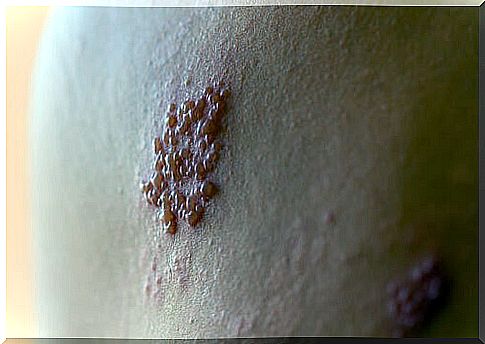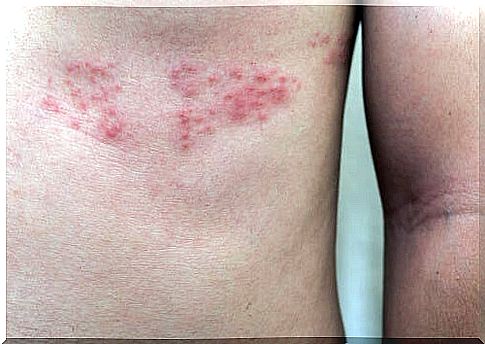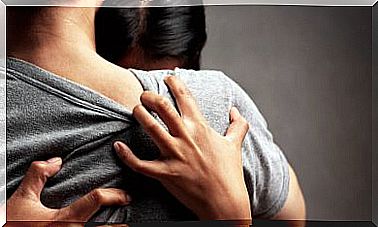How Long Does Shingles Pain And Symptoms Last?
Herpes zoster, also called shingles , is a disease caused by the varicella-zoster virus. Once a person has had chickenpox at some point in their life, the virus can reactivate again and cause a number of symptoms and injuries.
This happens because the varicella-zoster virus remains latent in the body. It is estimated that 1 in 3 people who have suffered chickenpox develop it. In general, this reactivation occurs after the age of 50, but it can be early.
Shingles symptoms can resolve in 3 to 5 weeks without intervention. However, sometimes the pain remains for much longer and can be difficult to treat.
What are the symptoms of shingles?
Herpes zoster is characterized by manifesting itself in a specific area of the body. Hence it is called shingles, since the lesions draw a similar shape to this animal. Most of the time it is located in the thorax or in the waist.
Although symptoms are mild in some people, others experience severe pain that is difficult to relieve. At first, when herpes begins to manifest, you feel a kind of tingling or itching in the area.
A few days later, in that same place, the eruption appears. Blisters form that contain fluid, are tender to the touch, and are also itchy. These blisters, when bursting, transmit their content with viruses.
It is important to note that shingles are not contagious. That is, these injuries cannot be transmitted to another person. What is contagious is the chickenpox virus, so the other person, in any case, can catch this pathology if they have not had it before.
After about ten days, the blisters dry up and crust over. Although the disease seems cured, there is a high risk that the pain in that area will persist.

Post-herpetic pain
Post-herpetic pain is also medically called post-herpetic neuralgia . It is the most frequent complication of this pathology. It consists in that, once the blisters and scabs have disappeared, the pain persists for more than three months.
This pain is intense and appears in the same area where the rash was. It can be accompanied by increased sensitivity throughout the region and intense itching. For this reason, people who suffer from it usually wear loose clothing, since the very touch of the clothes irritates them.
This complication has a great impact on the life of the patient. Sometimes, it is difficult to sleep, and the pain that becomes chronic generates changes in lifestyle that lead to a greater tendency to depression. It can even be difficult to concentrate for work or any other task.
This is framed in the pictures of chronic neuropathic pain. In the medical clinic, it is one of the most complex situations to handle, due to the social implications it has. Chronic pain reminds that the problem is present at all times.
How is shingles treated?

Shingles itself, when it does appear, can be treated with antiviral medications such as acyclovir. However, what is most sought to solve is pain. For this reason, a series of therapeutic options have been established for postherpetic neuralgia:
- Capsaicin Skin Patches : Capsaicin is a substance that is present in hot peppers. It is used to treat pain in specific areas.
- Anesthetic drugs, in the form of patches or local injections.
- Anticonvulsants and tricyclic antidepressants : Some of these medications have been shown to help reduce the perception of pain.
Shingles in practice
The most important thing to remember is that, when the first symptom of shingles appears, we must go to the doctor. He will help us choose the best treatment.
The greater the rush to institute the measures, the pain will subside sooner. Sometimes, the need for psychological treatment is imposed at the same time, so that it serves as a support for the discomfort that is generated by the situation.









